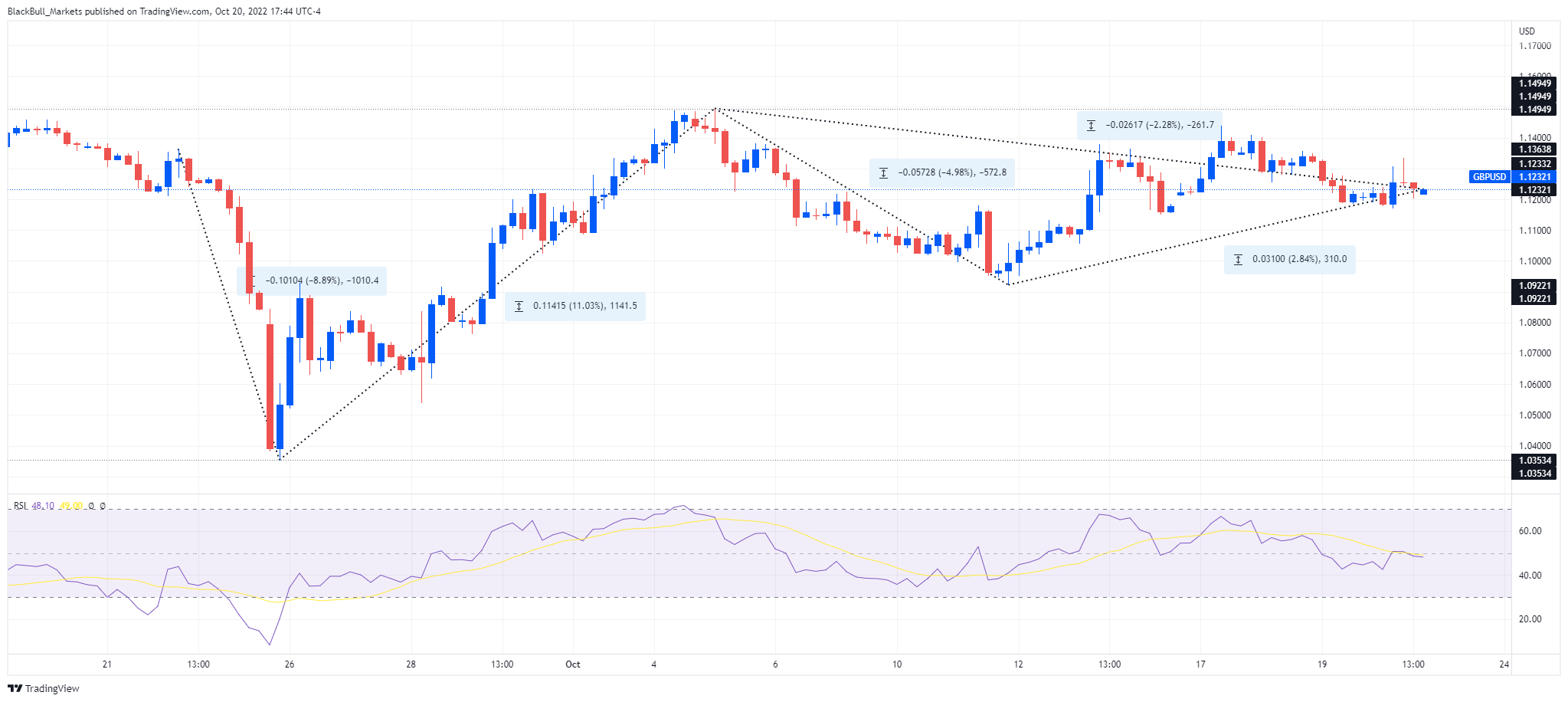The British pound is likely to see another few months of turmoil now that Prime Minister Liz Truss has resigned.
During Truss’ reign, which latest a mere 45 days, the shortest tenure in UK prime ministerial history, the pound was rocked by her government’s plan to borrow billions of dollars to fund tax cuts. On the day of the release of the ‘mini-budget’ that contained the tax cut plan, the pound fell from ~$1.12000 to its weakest level ever, with speculation that it could hit and cross parity with the US dollar, a forex reality that had only been explored once in the past, in 1985, when the super-strength of the US dollar decimated the pound (along with every other currency).
The pound did recover from this crisis as Truss and her government began to backtrack on the planned tax cuts, with further support added to the GBP from an emergency intervention from the Bank of England that is a story for another day.
As it stands, the GBP now has a few major events ahead of it that could kick up some volatility.


GBP/USD 4GH, with RSI
The first is whether Boris Johnson, the Prime Minister that was succeeded by Truss, will contest for the leadership of the country's ruling party, and by extension the Prime Ministership. It is anyone's bet how the market will react to this possibility.
The second is whether Rishi Sunak, the UK’s ex finance Minister who was beaten by Truss for the top position in September, will contest for the Prime Ministership. As a known face with a known agenda, Sunak contesting for the job could help provide some stability to currency markets. Sunak had earlier dismissed Truss’ tax cut plans as fantasy economics in favour of a very gradual application of tax over a decade.
The GBP/USD is currently priced at $1.1230, -2.3% down from its October peak, and any bias in any direction may emerge in the next few days as the leadership race heats up.




